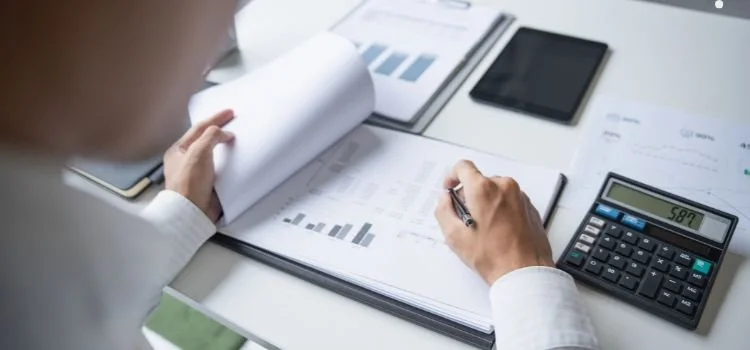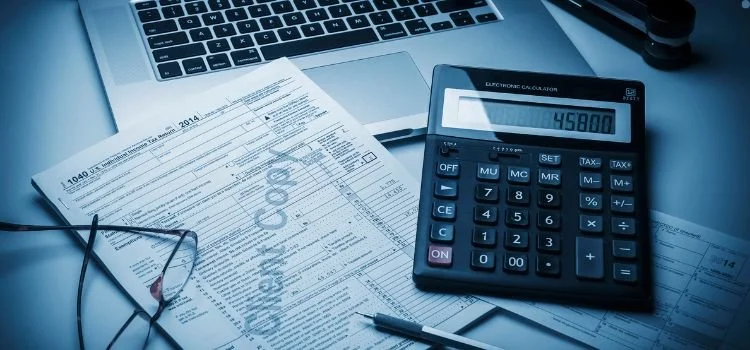Director Loan Account Guide for Second-Hand Business Owners
If you treat your company’s money like your own without proper planning, HMRC won’t look kindly on it. One of the most common pitfalls small business owners face is misunderstanding the Director’s Loan Account (DLA).
Imagine you’ve had a good quarter, so you dip into the company bank account to cover some personal expenses, thinking you’ll sort it later. Fast-forward nine months, and you get a surprise tax bill from HMRC for an overdrawn DLA. Suddenly, the profit you thought you’d made is eaten up by extra tax charges and interest.
Sadly, this is the reality many small business owners face, and probably you’ve faced that too.
The good news is that by learning how DLAs work and planning, you can avoid unnecessary tax bills, stay compliant, and keep more money in your pocket.
Let’s break it down for you.
Table of contents
Director Loan Account Guide
What is a Director’s Loan Account in a Small Business?
A Director’s Loan Account (DLA) is essentially a record of money that flows between you and your limited company, outside of your salary, dividends, or expense reimbursements.
Think of it as a running balance sheet that shows:
Money you’ve put into the company (a loan from you to the business).
Money you’ve taken out of the company (a loan from the company to you).
If you’re a second-hand business owner, this often happens when you top up company funds to purchase stock, or when you take money out for personal use before profits have been formally distributed.
For example, if you’re a jeweller and you inject £20,000 of personal savings into the business to buy a new batch of diamond rings, that amount is credited to your DLA. Later, if you withdraw £5,000 from the company bank account for a personal holiday, that would be shown as a debit. The running balance determines whether the company owes you or you owe the company.
Key point: HMRC doesn’t mind directors lending or borrowing from their company, but they care deeply about how it’s recorded and whether the right tax is paid. That’s why keeping accurate DLA records is vital.
How Does a Director’s Loan Account Work for Second-Hand Business Owners?
For second-hand retailers, cash flow can fluctuate wildly. One month, you might sell a rare Rolex for £50,000, while the next month sales dip because you’re waiting on new stock.
It’s tempting to move money between your personal and business accounts freely, but this is where the Director’s Loan Account comes in.
Here’s how it typically works in practice:
Loaning money to your company: You might put in personal funds to purchase stock quickly, especially in competitive markets like luxury watches or used cars. This shows up as the company owing you. When the business has stronger sales later, you can repay yourself tax-free.
Borrowing from your company: Maybe you take out £8,000 to cover a personal expense before the business declares dividends. In this case, you now owe the company. If that balance isn’t repaid within 9 months of the company's year-end, you could face a Section 455 Corporation Tax charge (currently 33.75% in 2025).
Every day grey areas: Sometimes, directors accidentally blur the lines. For instance, using the company debit card to pay for fuel on a personal trip, or taking stock for personal use without recording it. Each of these small transactions adds up and affects the DLA.
The system is simple in theory, but it can get complicated quickly if not monitored. If your DLA ends up “overdrawn” (meaning you owe the company), HMRC can step in with heavy penalties and tax charges.
Why it matters for second-hand businesses: Because stock values can be high and transactions frequent, DLAs are particularly risky in this sector. Without careful tracking, a few poorly timed withdrawals or reimbursements can leave you with a surprise tax bill.
What Are the Tax Implications of a Director’s Loan Account?
A Director’s Loan Account isn’t just about moving money in and out of your business; it has real tax consequences if not managed carefully.
If your DLA is overdrawn (meaning you owe money to the company), HMRC may apply a Section 455 Corporation Tax charge.
As of 2025, this stands at 33.75%, mirroring the higher rate of dividend tax. This tax is applied to the outstanding loan balance if it hasn’t been repaid within nine months of your company’s year-end.
For example, if you own a used car dealership and borrow £15,000 from your company in October 2025, but your year-end is December 2025, you must repay it by September 2026 to avoid the Section 455 charge.
Additionally:
If you write off a director’s loan (i.e. the company decides you don’t have to repay it), HMRC may treat it as income, and you’ll have to pay Income Tax on it.
Interest-free loans over £10,000 are considered a benefit in kind, which means extra reporting requirements and a potential personal tax bill.
These rules mean that failing to manage your DLA properly could wipe out your profit margins, leaving your second-hand business with avoidable costs.
Tax Implications of a Director’s Loan Account
How Can a Director’s Loan Account Affect Your Personal and Business Tax Bill?
A Director’s Loan Account affects both sides of the coin, your personal tax and your company’s Corporation Tax.
For your company: An overdrawn DLA could increase your tax bill with the Section 455 charge. Even though this tax is refundable when you repay the loan, it ties up valuable cash that your business could have used for stock purchases or marketing.
For you personally: If the company clears the loan for you, HMRC treats it as a form of income, which can push you into a higher tax bracket. Also, any benefit in kind from interest-free loans must be reported on a P11D, which adds to your personal tax obligations.
Imagine you run a jewellery business and borrow £8,000 from the company account interest-free. If you don’t repay it within the required timeframe, HMRC sees this as a benefit. You’ll pay Income Tax on it, and your company will face additional National Insurance contributions.
This double impact is why so many small business owners get caught out. You may think you’re simply “borrowing your own money” but, in the eyes of HMRC, it’s very different. Proper planning avoids these painful surprises.
What Records Should You Keep for Your Director’s Loan Account?
Good record-keeping is your best defence when it comes to Director’s Loan Accounts.
HMRC expects you to be able to prove every transaction between you and your company. For second-hand businesses, where high-value transactions are common, this is especially crucial.
At a minimum, you should keep:
A detailed ledger of all money withdrawn or injected into the company.
Dates and amounts for every transaction.
Notes explaining whether the withdrawal was a loan, dividend, salary, or expense reimbursement.
Supporting documents, such as bank statements, invoices, or receipts.
Cloud-based accounting tools like Xero or QuickBooks make this process much easier. These platforms allow you to tag transactions correctly and run real-time DLA reports. That way, you always know whether your balance is in credit (the company owes you) or debit (you owe the company).
Failing to keep proper DLA records can lead to HMRC reclassifying withdrawals, sometimes as undeclared salary or dividends, leading to unexpected tax bills.
For a watch dealer who regularly moves money between personal and company accounts to purchase stock quickly, not recording this properly could result in an HMRC investigation.
How Can Second-Hand Business Owners Manage a Director’s Loan Account Effectively?
Managing a Director’s Loan Account (DLA) well is all about discipline and visibility.
For business owners in the second-hand sector where cash flow can be unpredictable, whether you’re a jeweller buying high-value stock or a car dealer juggling trade-ins—keeping control of your DLA protects both your company and your personal finances.
Here are some ways to manage it effectively:
Use Clear Accounting Systems
Always record every withdrawal or repayment in your bookkeeping software (like Xero or QuickBooks). Don’t rely on memory, HMRC will want proof if they investigate.Set Repayment Plans
If you borrow money from the business, treat it like you would a bank loan. Decide on a repayment schedule and stick to it. This reduces the risk of facing a Section 455 Corporation Tax charge.Separate Business and Personal Finances
It may be tempting to dip into company funds when stock opportunities arise, but mixing business and personal expenses makes it harder to track what’s really owed. Keep accounts clean to avoid problems later.Understand Tax Deadlines
Remember, any outstanding director’s loan must usually be repaid within nine months of your company’s year-end to avoid the extra tax charge. Planning repayments around this deadline keeps you safe.Seek Advice Early
If you’re unsure about how your withdrawals will be taxed or if you’ve built up a significant loan balance talk to an accountant before HMRC does. A specialist can help you restructure loans or classify them in the most tax-efficient way.
For second-hand businesses, where large cash sums can change hands quickly, these steps mean you can act with confidence without stumbling into unexpected tax traps.
Conclusion
A Director’s Loan Account can be a useful tool for flexibility, but it’s also one of the easiest ways for small business owners to trip up with HMRC.
Borrowing without keeping clear records or failing to repay loans on time could leave you facing unnecessary penalties and extra tax.
But with discipline, planning, and the right support, you can manage your DLA effectively and keep both your personal and business tax bills under control.
As a second-hand business owner, you already know the importance of trust and precision in your trade. Apply that same mindset to your financial management, and you’ll not only stay compliant but also protect your hard-earned profits.
The takeaway is simple: treat your Director’s Loan Account like any other financial commitment… track it, manage it, and plan ahead. And if it ever feels overwhelming, don’t wait until HMRC comes knocking, work with a specialist accountant like Rhombus who understands the unique challenges of your industry.
Meet Lewis
Lewis is a professional accountant and founder of Rhombus Accounting. He regularly shares his knowledge and best advice here on his blog and on other channels such as LinkedIn.
Book a call today to learn more about what Lewis and Rhombus Accounting can do for you.



